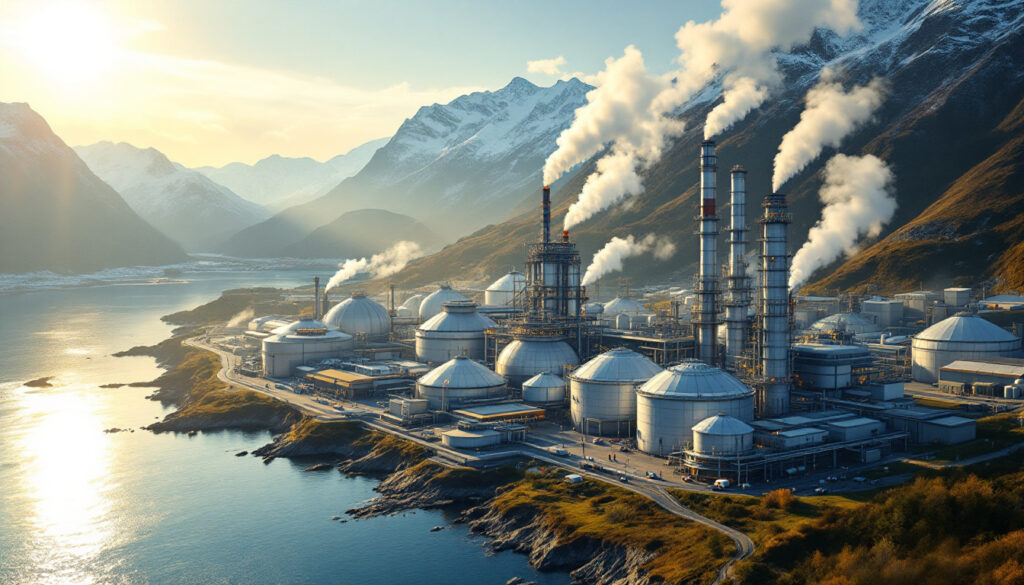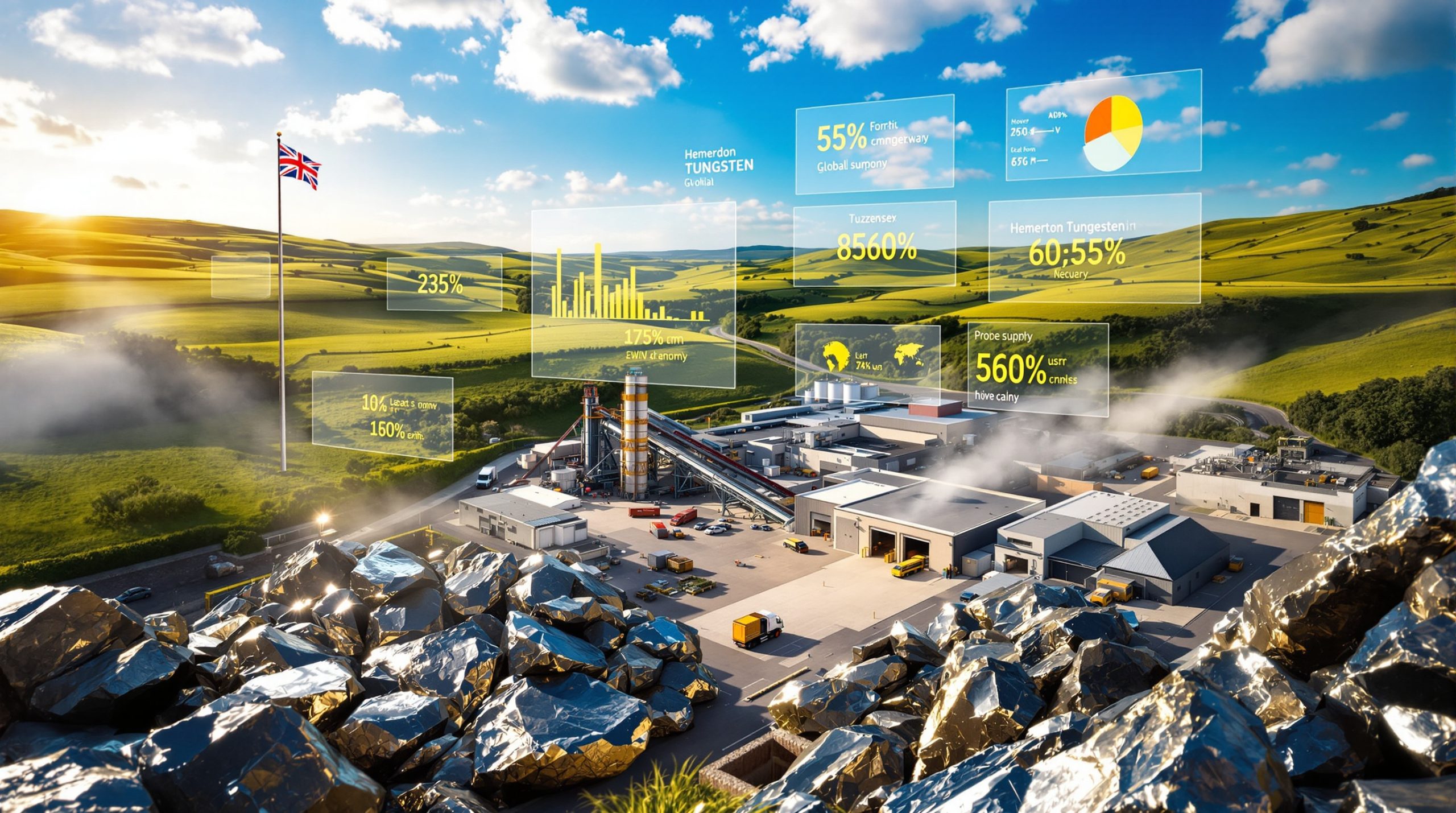Boliden inaugurates "world's most climate-efficient" zinc smelter in Norway 2025 by setting new benchmarks in sustainable metallurgy. The Odda facility is a pioneering example of advanced production efficiency and environmental responsibility. Consequently, it has captured global attention for its lower carbon footprint and innovative operations.
What is the Boliden Odda Zinc Smelter and Why is it Significant?
In March 2025, the Odda Zinc Smelter was inaugurated amid celebrations marking Norway’s rich metallurgical heritage. The plant’s launch by Boliden was a historic moment as Boliden inaugurates "world's most climate-efficient" zinc smelter in Norway 2025. This state-of-the-art facility represents a leap forward for modern metal production.
Located beside Norway's majestic western fjords, the project benefits from abundant hydropower. This renewable energy source is vital for mining’s role in the clean energy transition and significantly reduces the facility’s operational carbon footprint. Furthermore, it enables more sustainable industrial practices.
The introduction of this smelter coincided with a centennial celebration of zinc production in Odda. For instance, the facility honours Norway's industrial legacy while setting global standards for low-emission production. This balance of tradition and modernity is crucial as the industry shifts towards greener practices.
How Much Will the Expanded Facility Increase Production Capacity?
The expansion project at Odda represents a dramatic leap in production capabilities. Production capacity will surge from 200,000 tonnes per annum (tpa) to 350,000 tpa. Consequently, this increase of 75% or nearly double the output potential demonstrates the facility's enhanced efficiency and operational innovation.
Notably, employees will also see productivity gains. The facility can now produce roughly 1,000 tonnes of cast zinc per full-time employee annually. This figure overtakes the global average of 650-700 tonnes per employee. Furthermore, such efficiency improvements are key to decarbonisation in mining: Australia’s clean energy revolution.
Challenges arose during the expansion, with delays reported in September 2024 due to technical issues at the new roasting facility. However, timely resolutions ensured that productivity targets were met. In addition, this resilient approach safeguards European industry against future disruptions.
What Technical Upgrades Were Implemented at the Odda Facility?
The transformation of the Odda smelter involved significant technical upgrades across all processing stages. Firstly, a state-of-the-art roasting furnace was installed to convert zinc sulfide concentrates efficiently. This system optimises combustion in real time and reinforces digital transformation driving efficiency in modern mining operations.
Moreover, a new sulphuric acid plant was introduced. It converts captured sulfur dioxide into commercial-grade acid, utilising double-conversion technology with rates exceeding 99.8%. Consequently, emissions are minimised, and valuable byproducts enter the market with minimal waste.
The upgraded cellhouse uses advanced electrowinning technology, which reduces energy consumption by around 15%. This improvement further streamlines production. In addition, the leaching, cleaning, and casting facilities now operate with automated systems that boost quality control and output consistency.
What Are the Environmental Benefits of the New Smelter?
Boliden inaugurates "world's most climate-efficient" zinc smelter in Norway 2025 with a keen focus on environmental sustainability. One major environmental benefit is reduced waste generation. By achieving up to 98.5% recovery of zinc from concentrates, the facility significantly decreases the residual material that needs disposal.
Furthermore, energy optimisation is at the heart of the operation. Advanced heat exchangers capture thermal energy, which is then used to pre-heat incoming materials. This reactive approach curtails energy use and enhances process sustainability. In addition, such efficiency supports the broader goals of strategies for achieving science-based decarbonisation targets in mining.
The plant’s reliance on 100% renewable hydropower further underscores its environmental credentials. Compared to coal-based smelters in other regions, its carbon emissions per tonne of zinc are dramatically lower. This is particularly beneficial as Europe moves towards tighter carbon regulations.
What is Zinc Used For in Modern Industry?
Zinc is integral to modern infrastructure and plays a vital role across various industries. Primarily, zinc is used for corrosion protection through galvanisation. For example, it extends the life of steel structures by 50-100 years, thereby reducing replacement costs and environmental waste.
The metal’s applications extend well beyond construction. In the automotive industry, average vehicles contain between 8 and 15 kg of zinc for rust protection. Besides, zinc proves crucial in wind turbine structures; typical onshore wind turbines contain 10-15 tonnes of this metal. Consequently, zinc’s absence would drastically affect the durability of modern infrastructure.
Additionally, zinc is indispensable in:
- Die-casting for precision parts
- Producing brass alloys
- Manufacturing zinc oxide for rubber vulcanisation
- Formulating agricultural fertilisers
- Supporting pharmaceutical applications
Each application reinforces zinc’s sustainability credentials, particularly given its high recyclability, which often exceeds 90%.
How Does the Odda Smelter Compare to Global Competition?
The Odda facility stands out among global zinc smelters due to its innovative climate-efficient design. Its production metrics are unmatched; for instance, it generates nearly 1,000 tonnes of zinc per employee annually. This substantially outpaces the global average and underlines the facility’s technological superiority.
Furthermore, the plant benefits from Norway’s secure renewable energy. This not only enhances its efficiency but also lowers production costs by 15-20% compared to international competitors. In comparison, Chinese smelters typically rely on coal and emit 3.5-4.0 tonnes of CO₂ per tonne of zinc.
In addition, the superior impurity management system at Odda makes it versatile, allowing the processing of more complex feeds. For readers seeking detailed insights on boliden's zinc smelter, the operational differences between regions are striking, demonstrating the plant’s competitive advantage.
What Did Boliden's Leadership Say About the Project?
Boliden’s leadership expressed strong support for the new facility. Mikael Staffas, Boliden’s President and CEO, remarked, "This is a historic milestone as we almost double production at the world's most climate-efficient zinc smelter." His statement reaffirmed the strategic importance of sustainable production.
Additionally, Staffas noted that the technology upgrades would secure long-term industrial resilience. He described the smelter as "a flagship for Norwegian industry to be proud of for another 100 years." Therefore, the leadership’s vision promotes both regional growth and global competitiveness.
The management further highlighted the importance of renewable energy integration. They emphasised that such a commitment is crucial in meeting future climate goals while ensuring economic efficiency. This strategy positions the facility as a leader in the industry’s modernisation drive.
How Does This Project Support the European Green Transition?
The Odda expansion is not just about increased production; it underpins Europe’s green transition. The smelter supports the renewable energy sector by supplying low-carbon zinc for wind turbines and solar mounting systems. Consequently, Europe’s industrial sectors can reduce embodied carbon in their products.
In addition, the facility integrates circular economy principles by extracting more value from each tonne of raw material. This includes recovering vital trace elements essential for semiconductor and renewable energy applications. Also, it helps reduce dependency on imported metals from high-emission regions.
Moreover, the project's efficiency is enhanced by Australia’s green aluminium initiative: a model for sustainable metal production. This approach reflects a broader industrial shift towards sustainability that many sectors are now embracing, leading to a significant competitive advantage in global markets.
FAQ: Common Questions About Zinc Production and the Odda Facility
What makes zinc production "climate-efficient"?
The facility utilises renewable hydropower and advanced energy recovery systems. As a result, thermal energy is repurposed, and electric consumption is reduced. Such practices enable the plant to maintain emissions below 0.5 tonnes of CO₂ per tonne of zinc produced.
How does zinc contribute to sustainability in other industries?
Zinc extends the lifespan of steel structures through galvanisation. Additionally, its recyclability exceeds 90%, meaning that zinc is sustainably reused. This also contributes to lowering the overall environmental impact of construction and automotive sectors.
What are the economic implications of expanded zinc production in Europe?
The increased capacity bolsters supply security and creates high-skill jobs. Moreover, it lowers production costs and provides manufacturers with low-carbon materials. This dual benefit reduces exposure to price volatility and meets tightening carbon regulations.
How does the Odda facility compare to zinc smelters in other regions?
Odda’s emissions are dramatically lower than those from coal-dependent models. In contrast, competitors in China and Australia face higher carbon outputs. Additionally, production efficiency at Odda sets a global benchmark, ensuring it remains a market leader.
What future developments might we see in zinc production technology?
Innovations such as direct electrowinning and hydrogen reduction of zinc oxide are on the horizon. Furthermore, machine learning algorithms are being implemented for process optimisation. Industry experts predict these advancements will further lower energy requirements and production costs.
Boliden inaugurates "world's most climate-efficient" zinc smelter in Norway 2025 as a transformative milestone. This facility blends innovative technology, sustainable practices, and boosted production capacity to set a new industry benchmark. Consequently, it not only revolutionises zinc production but also supports Europe’s broader environmental objectives.
Ready to profit from the next significant mineral discovery?
Gain exclusive access to actionable investment opportunities on the ASX with Discovery Alert's proprietary Discovery IQ model, which analyses mineral discoveries in real-time to deliver instant alerts and comprehensive insights. Explore our dedicated discoveries page to understand how major mineral discoveries can generate substantial returns for early investors.




